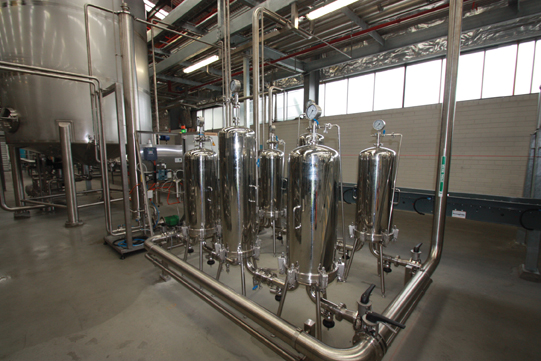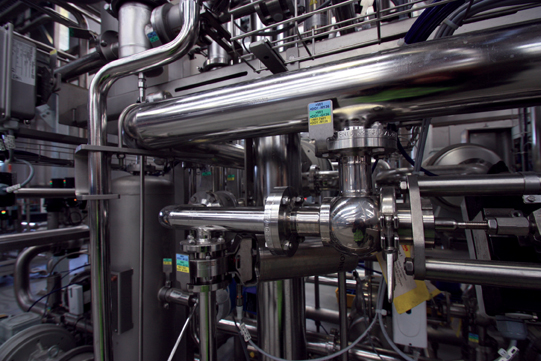
Coca-Cola Amatil is reducing the carbon footprint of its 600ml PET bottles by 22% with the help of stainless steel.
Innovation in process technology and the successful application of stainless steel has led to efficiency gains and sustainable outcomes for one of the world's most recognised brands in the food and beverage industry.
In 2011, Coca-Cola Amatil (CCA) announced a $450 million investment in PET bottle self-manufacture, or ‘blowfill’ technology at its production facilities across Australia, New Zealand, Indonesia, Papua New Guinea and Fiji.
Blow-fill technology is a manufacturing technique that allows companies to produce their own PET (polyethylene terephthalate) bottles within their own facility. It allows manufacturers to form, fill and seal bottles in one continuous process at the one location without human intervention. Blow-fill has enabled CCA to make its PET bottles using significantly less PET resin, resulting in production of the lightest-weight bottles in the global Coca-Cola system.
Previously, CCA would buy blow-moulded bottles from a third party supplier, transporting them to its own facility to sterilise and fill with  product. CCA’s integration of these three steps into one operation has automated its production lines, creating economies of scale and
product. CCA’s integration of these three steps into one operation has automated its production lines, creating economies of scale and
optimising efficiencies of operation.
CCA’s Kewdale facility in Perth is one packaging line that recently completed its installation of blow-fill equipment, procured from Krones AG, a German-based process manufacturer.
CCA engaged ASSDA member and Accredited Fabricator TFG Pty Ltd for the installation and fabrication of the stainless steel interconnecting pipework for the facility’s new blow-fill equipment.
Sydney-based ME Engineering detailed the scope of works, and coordinated the process engineering and installation of the new equipment.
Over 6km of 304L and 316L AS1528 standard grade stainless steel tube was supplied by ASSDA sponsor Prochem Pipeline Products, ranging in size from 25mm-200mm diameter.
The TFG team purge TIG welded all stainless steel components on site and internally passivated the stainless steel using citric acid.
ME Engineering’s Project Manager Andrew Meagher said grade 316L was specified for CCA’s Kewdale facility because of the high chloride content of the water supply in Perth.
With spring water one of CCA’s main products, sanitation is key to avoiding microbiologically-influenced corrosion.
Tom Moultrie, General Manager of TFG, said that whilst there are other materials that can be specified for equipment using compressed air, stainless steel provides aesthetic appeal, trusted hygiene and longer life span.
The use of stainess steel has been successful in the output of this project, with CCA’s State Projects Engineer Simon Wall stating that ‘as a beverage manufacturer, food safety aspects of our processes and equipment are critical to ensuring the integrity and quality of our products – an area that stainless steel ensures.’
 Kewdale’s new blow-fill line commenced operation in June 2012. It features 14 blowing stations, 108 filling nozzles and 18 capping stations, and has the capacity to produce 26,000 bottles per hour.
Kewdale’s new blow-fill line commenced operation in June 2012. It features 14 blowing stations, 108 filling nozzles and 18 capping stations, and has the capacity to produce 26,000 bottles per hour.
Mr Wall said the investment in PET bottle self-manufacture will continue to deliver savings in raw materials - bottles are made using less PET resin and less water is used in the bottling process - and meet future consumer growth and demand.
CCA’s ongoing commitment to innovation and sustainability has maximised production capabilities whilst minimising the use of resources.
By the end of 2012, 10 blow-fill lines will have been deployed across CCA’s production facilities in Australia, bringing self-sufficiency to over 70%. Once all 26 production lines are implemented, CCA estimates a saving of 7000 tonnes of PET resin per year, a 15% reduction in bottle weight and 50,000 truck movements eliminated per year. Overall, this is reducing the carbon footprint of every 600ml bottle by an average of 22%.
Images courtesy of TFG Pty Ltd.
This article is featured in Australian Stainless magazine, issue 52.